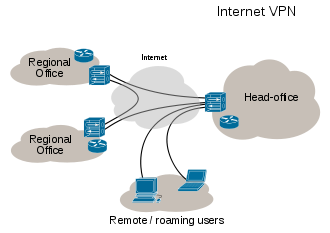A valuable feature of HTTP is the Uniform Resource Locator (URL). A URL is a way of addressing
just about any form of information on the Internet. From ordinary files in a file system, to FTP archives,
gopher sites (a text-based precursor to the Web), Usenet newsgroups, etc. URL addresses allow the Web
to function as a unifying interface to these diverse resources on the Internet.
The URL for a Web resource begins with http://, an FTP site with ftp://, a news group with news://, etc.
An unofficial convention for addressing Web servers is http://www.server_name.domain e.g.,
http://www.uwaterloo.ca, which is an alias for the actual host name running the server application.
Image Maps:
An attractive form of user interface is the image map. An image map is an image file which has areas
defined on it to serve as buttons (“hot links”). For example, a campus map could be an image map where
the buildings are buttons that link to their floor maps.
Forms:
Another useful interface tool is the fill-in form. A form allows the subscriber (client) to supply
information to the server to be acted upon. For example a form interface can be used to query a database.
Applets:
Most browsers have built-in virtual machines, programs that can interpret programs downloaded via
HTTP from a Web server. Programs written in Java or ActiveX can be interpreted and run through a
browser.
Common Gateway Interface (CGI) Scripts:
CGI scripts allow the Web server to control other programs on the computer. For example, a form works
by providing the users information to a CGI script written in C, Perl, or some other supported language.
The script is then executed, processing the information provided and interacting with other programs on
the server such as mail, a database, etc.
just about any form of information on the Internet. From ordinary files in a file system, to FTP archives,
gopher sites (a text-based precursor to the Web), Usenet newsgroups, etc. URL addresses allow the Web
to function as a unifying interface to these diverse resources on the Internet.
The URL for a Web resource begins with http://, an FTP site with ftp://, a news group with news://, etc.
An unofficial convention for addressing Web servers is http://www.server_name.domain e.g.,
http://www.uwaterloo.ca, which is an alias for the actual host name running the server application.
Image Maps:
An attractive form of user interface is the image map. An image map is an image file which has areas
defined on it to serve as buttons (“hot links”). For example, a campus map could be an image map where
the buildings are buttons that link to their floor maps.
Forms:
Another useful interface tool is the fill-in form. A form allows the subscriber (client) to supply
information to the server to be acted upon. For example a form interface can be used to query a database.
Applets:
Most browsers have built-in virtual machines, programs that can interpret programs downloaded via
HTTP from a Web server. Programs written in Java or ActiveX can be interpreted and run through a
browser.
Common Gateway Interface (CGI) Scripts:
CGI scripts allow the Web server to control other programs on the computer. For example, a form works
by providing the users information to a CGI script written in C, Perl, or some other supported language.
The script is then executed, processing the information provided and interacting with other programs on
the server such as mail, a database, etc.





0 comments:
Post a Comment